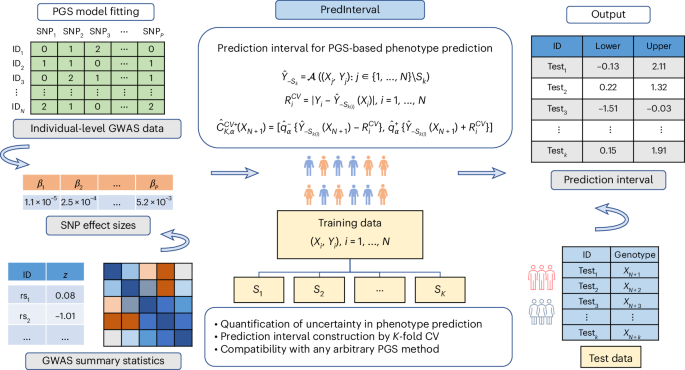Home / Science / Innovative PredInterval Boosts Genetic Risk Prediction Accuracy Across Traits
Innovative PredInterval Boosts Genetic Risk Prediction Accuracy Across Traits
13 Oct
Summary
- Developed PredInterval, a nonparametric statistical method for well-calibrated phenotypic prediction intervals
- PredInterval outperforms existing methods in simulations and real-world data from UK Biobank
- PredInterval enables effective identification of high-risk individuals

Researchers have unveiled a groundbreaking statistical method called PredInterval that significantly advances genetic risk prediction. PredInterval is a nonparametric framework that leverages polygenic risk scores to generate well-calibrated phenotypic prediction intervals, outperforming existing techniques across a range of quantitative and binary traits.
Comprehensive simulations demonstrate PredInterval's superior performance. It consistently achieved a mean coverage rate of 96% for both quantitative and binary traits, far exceeding the 91% and 83.4% rates of the BLUP analytical form and CalPred methods, respectively. PredInterval also proved more robust to factors like sample size, polygenicity, and heritability.
The researchers further validated PredInterval's effectiveness using data from the UK Biobank. Across 12 traits, PredInterval achieved a mean coverage rate of 95.6% for quantitative traits and 95.9% for binary traits, significantly outperforming the other techniques. Notably, PredInterval excelled at identifying high-risk individuals, with an 8-86% improvement over BLUP analytical form and a 127-1,484% boost over CalPred.
Advertisement
This breakthrough could revolutionize genetic risk prediction and personalized healthcare. By generating accurate prediction intervals, PredInterval empowers clinicians to pinpoint high-risk individuals in a principled manner, enabling targeted interventions and preventive measures. As the researchers conclude, PredInterval's flexible, nonparametric framework makes it a powerful tool for advancing precision medicine.




